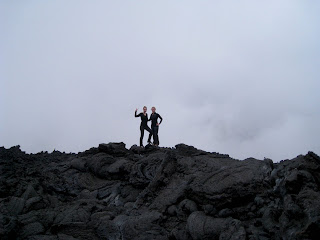Our first day in
Antigua was spent exploring the city.
We stumbled upon a tiny kitchen with local women making tortillas by hand.
They were happy to sell us four for 1 Quetzal (about $0.13).

We also checked out the city square and some old cathedrals.



We took a tour of the most famous jade factory in Guatemala. It was even visited by Bill Clinton during his presidency! I custom designed a beautiful jade necklace and picked out a matching ring and earrings, all for about $100 US.

On the way back from the jade factory, we stumbled upon a crowd in front of the church. Soon there were very loud fireworks and confetti as the Cardinal of Antigua (we think) and procession of people with candles exited the church.

Last night for we rang in the New Year in style in our new friend Ricardo’s Tabacos y Vinos (Cigar and Wine) shop. He was kind enough to provide us with some delicious wine and a Cuban cigar.




Some of these pictures may even show up online on Ricardo’s website: http://tabacosyvinos.com
For our New Year’s dinner, we went to Ricardo’s friend Hector’s restaurant. Hector went to culinary school in the United States and returned to Guatemala to turn his home into a restaurant. The tiny place consisted of a few tables with the kitchen in plain view. Even though Hector doesn’t have a sign, or even a name for his restaurant, word of mouth ensured that the place was overflowing.
We feasted on homemade pasta and duck with crème freche and choclat fondant for dessert. It was heavenly and very reasonably priced.



The streets were filled with people, especially in front of Ricardo’s shop right under el Arco de Santa Catalina, the famous arch of Antigua. There were musicians and people dressed up as old women dancing in the streets. There was also a little boy wearing a bull costume covered in fireworks that went off as he pranced around the street.


After Ricardo’s shop closed we hung out in the doorway safe from the jostling of the crowd and the spontaneous fireworks that kept going off in the streets. We friends with the other people sharing our nook. We were lucky because they were willing to share the bottle of champagne and flask of whiskey that they had brought with them.


These ladies really knew how to ring in the New Year!

The next morning, we enjoyed the opportunity to sleep in for the first time during our trip. Needless to say, not everyone was so lucky.




















































